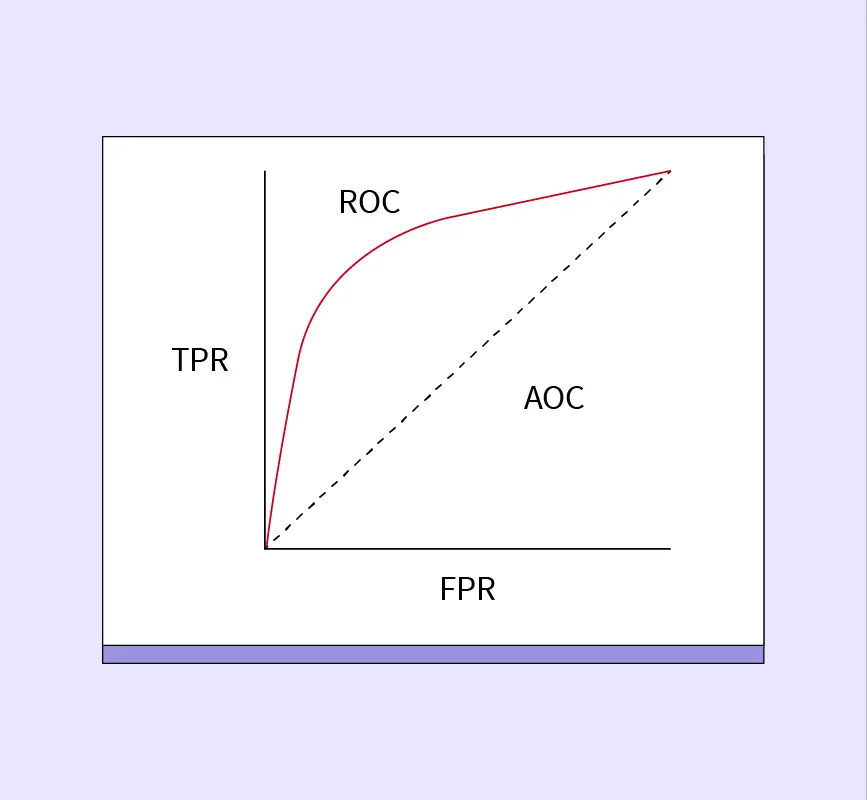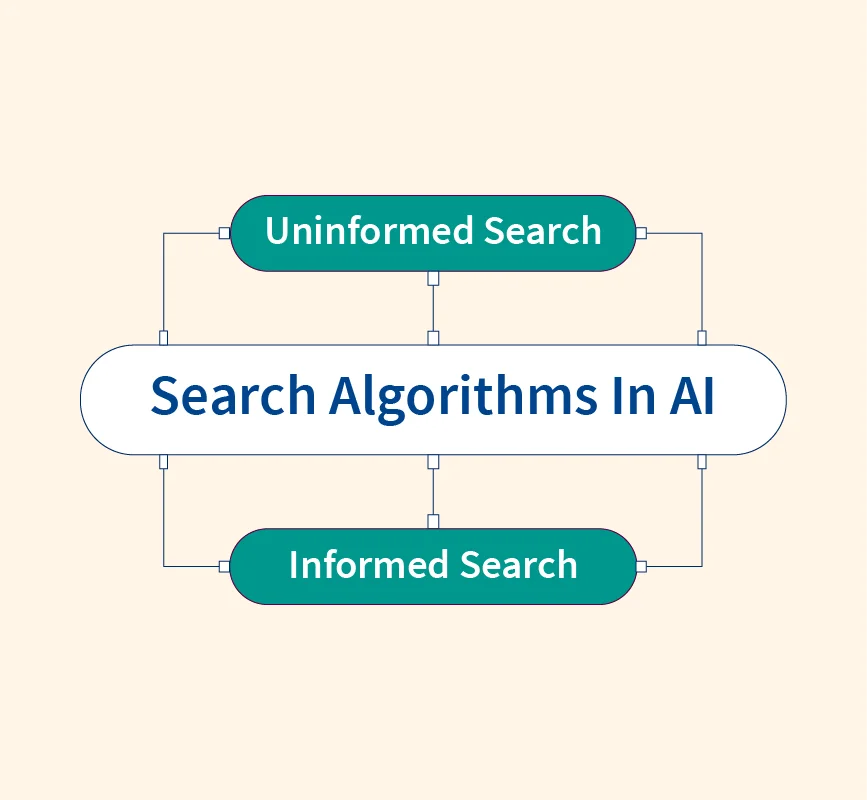Search algorithms form the backbone of problem-solving in artificial intelligence (AI). Whether it’s navigating a maze, planning a robot’s movement, or strategizing in a game, AI systems often need to explore various possibilities to reach a goal. This exploration is enabled by search algorithms.
These algorithms simulate intelligent behavior by systematically examining sequences of decisions or actions. From simple blind searches to sophisticated heuristic-guided methods, they help AI systems find optimal or feasible solutions in complex environments.
Understanding the Role of Search in AI
In artificial intelligence, a search problem involves navigating from an initial state to a goal state through a series of valid actions. It’s a structured way of representing decision-making tasks where an agent must explore different paths to find a solution.
A well-defined search problem consists of:
- Initial State: Where the agent begins.
- Actions: All possible moves or decisions from each state.
- Goal State: The desired outcome or target.
- Path Cost: A numerical value representing the cost or effort required to reach a goal.
Search algorithms use these components to construct a search space, typically represented as a search tree or a search graph:
- Search Tree: A branching structure generated from the initial state without revisiting past states.
- Search Graph: A more efficient structure that accounts for repeated states and shared paths, reducing redundancy.
Understanding this structure is key to selecting the right algorithm.
Key Terminologies in AI Search Algorithms
To understand how search algorithms function in AI, it’s essential to grasp a few core terms:
- State Space: The complete set of all possible states the agent can reach.
- Nodes: Represent states in the search tree, including metadata like parent node, path cost, and depth.
- Frontier: Also known as the open list; it’s a queue of nodes waiting to be explored.
- Explored Set: The set of already visited nodes, used to avoid redundancy and loops.
Cost Functions play a key role in evaluating and guiding searches:
- g(n): Cost from the start node to node n.
- h(n): Heuristic estimate of the cost from n to the goal.
- f(n) = g(n) + h(n): Estimated total cost (used in A* and similar algorithms).
Other important properties:
- Optimality: Whether the algorithm finds the best solution.
- Completeness: Whether it guarantees finding a solution if one exists.
- Time and Space Complexity: Resources needed for computation and memory.
Classification: Types of Search Algorithms
Search algorithms in AI are broadly classified into two main categories:
- Uninformed Search (Blind Search): These algorithms have no additional information about goal location other than the problem definition. They explore the search space systematically. Examples include Breadth-First Search (BFS), Depth-First Search (DFS), and Uniform Cost Search.
- Informed Search (Heuristic Search): These use heuristic functions to estimate the cost to reach the goal, allowing more efficient exploration. Examples include Greedy Best-First Search and A*.
Other forms include Online Search, where the environment is partially known, and Adversarial Search, used in games with opponents.
Uninformed Search Algorithms (Blind Search)
Uninformed search algorithms explore the search space without any domain-specific knowledge. They treat all nodes equally unless the path cost provides differentiation. These are foundational for understanding how AI can systematically explore problems.
1. Breadth-First Search (BFS)
BFS explores nodes level by level, starting from the initial state and expanding all neighboring nodes before moving to the next depth level. It uses a FIFO (queue) data structure.
BFS is ideal for finding the shortest path in unweighted graphs and is complete and optimal when all actions have equal cost. However, it consumes a lot of memory, especially for large or deep search spaces, making it less practical for complex problems.
- Pros: Guarantees optimal solution, simple to implement
- Cons: High space complexity, slow on deep trees
2. Depth-First Search (DFS)
DFS explores as deep as possible along each branch before backtracking. It uses a LIFO (stack) structure or recursion, making it space-efficient.
DFS is effective in scenarios where solutions are located deep in the search tree or when exploring all possible paths. However, it’s neither complete nor optimal in infinite or cyclic spaces without additional checks.
- Pros: Low memory usage, faster in deep trees
- Cons: Can get stuck in loops, doesn’t guarantee shortest path
3. Uniform Cost Search
Uniform Cost Search (UCS) expands the least-cost node first using a priority queue. It behaves like BFS when all costs are equal but outperforms it when costs vary.
UCS is complete and optimal, making it suitable for pathfinding problems involving variable edge costs (e.g., GPS routing). However, like BFS, it can be slow and memory-intensive for large graphs.
- Pros: Always finds the lowest-cost path
- Cons: Slow in large spaces, requires cost function and priority queue
4. Depth-Limited & Iterative Deepening Search
Depth-Limited Search (DLS) is a DFS with a fixed depth limit to prevent infinite recursion. It’s useful when the maximum depth of the solution is known in advance.
Iterative Deepening DFS (IDDFS) combines the space-efficiency of DFS with the completeness of BFS by repeatedly running DLS with increasing depth limits. It’s often used in applications like game tree exploration.
- Pros: Memory-efficient, complete like BFS
- Cons: Repeats work in earlier iterations, may be slow
Informed Search Algorithms (Heuristic Search)
Informed search algorithms use heuristic knowledge about the problem domain to guide the search process more efficiently. They evaluate each node using a heuristic function to estimate how close it is to the goal, helping prioritize promising paths.
1. Greedy Best-First Search
Greedy Best-First Search uses a heuristic function h(n) to expand the node that appears closest to the goal, ignoring the path cost g(n). It selects the node with the lowest h(n) at each step.
While it can be very fast, especially in large state spaces, it does not guarantee finding the shortest or even a correct solution if h(n) is not well-designed.
- Pros: Fast, memory-efficient, good for approximate solutions
- Cons: Not optimal or complete; can get stuck in local minima
2. A* Search (Tree and Graph Versions)
A* is one of the most widely used informed search algorithms. It uses a combined evaluation function:
$$f(n) = g(n) + h(n)$$
Where:
- g(n) = cost to reach node n
- h(n) = estimated cost from n to the goal
A* expands nodes with the lowest f(n) value, balancing actual cost and heuristic estimate.
If the heuristic h(n) is:
- Admissible (never overestimates),
- Consistent (monotonic),
Then A* is both complete and optimal.
In graph search, A* avoids revisiting nodes and uses an explored set to prevent loops—improving efficiency over tree-based implementations.
- Pros: Optimal, efficient with good heuristics
- Cons: Can consume high memory; performance depends on heuristic quality
3. Hill Climbing and Variants
Hill Climbing is a local search algorithm that continuously moves in the direction of increasing value (better heuristic score) until it reaches a peak.
While simple and fast, it’s prone to getting stuck in:
- Local maxima (non-optimal peaks)
- Plateaus (flat regions)
- Ridges (steep narrow peaks)
Variants like Stochastic Hill Climbing, Random Restarts, and Simulated Annealing attempt to overcome these issues by adding randomness or allowing occasional bad moves.
- Pros: Fast, memory-efficient
- Cons: Not optimal; can get stuck easily
4. Beam Search & Bidirectional Search
Beam Search is a heuristic-based optimization of BFS that expands only a fixed number of best nodes (beam width) at each level. It’s commonly used in natural language processing and speech recognition, where full search is computationally expensive.
- Pros: Reduces memory and time; suitable for approximate solutions
- Cons: Not complete or optimal; highly sensitive to beam width
Bidirectional Search runs two simultaneous searches: one forward from the initial state and one backward from the goal. The search terminates when the two meet, drastically reducing the search space.
Bidirectional BFS is efficient for large graphs with well-defined goal states (e.g., finding the shortest path in a network).
- Pros: Fast; space-efficient for symmetric problems
- Cons: Requires inverse actions; both paths must be generated
Comparison of Search Algorithms
| Algorithm | Time Complexity | Space Complexity | Complete | Optimal | Example Use Case |
| Breadth-First Search | O(b<sup>d</sup>) | O(b<sup>d</sup>) | Yes | Yes (if cost = 1) | Shortest path in unweighted graphs |
| Depth-First Search | O(b<sup>m</sup>) | O(m) | No | No | Puzzle solvers with deep trees |
| Uniform Cost Search | O(b<sup>1+C*/ε</sup>) | O(b<sup>1+C*/ε</sup>) | Yes | Yes | GPS navigation with varying edge costs |
| A* Search | O(b<sup>d</sup>) (best-case) | O(b<sup>d</sup>) | Yes | Yes (with admissible h(n)) | Robot path planning |
| Greedy Best-First Search | O(b<sup>m</sup>) | O(b<sup>m</sup>) | No | No | Web crawling and quick approximations |
| Hill Climbing | Varies | O(1) | No | No | Feature selection in machine learning |
| Beam Search | O(b * w) per level | O(w) | No | No | Speech recognition, NLP decoding |
| Bidirectional BFS | O(b<sup>d/2</sup>) | O(b<sup>d/2</sup>) | Yes | Yes (if both directions use BFS) | Social network shortest path queries |
Legend:
- b: branching factor
- d: depth of the shallowest goal
- m: maximum depth of the tree
- C, ε: constants related to path cost
Applications of Search Algorithms in AI
Search algorithms power a wide range of real-world AI applications by enabling systems to make intelligent decisions, navigate environments, and solve complex problems.
- Game-Playing Agents: Algorithms like minimax and alpha-beta pruning use adversarial search to make strategic decisions in games like chess, Go, and checkers. These agents simulate possible moves and counter-moves to select the best action.
- Route and Path Planning: Algorithms such as A* and Uniform Cost Search are used in GPS systems, robotic navigation, and autonomous vehicles to find the shortest or safest path between locations.
- Puzzle Solving: Classic puzzles like the 8-puzzle, Sudoku, and Rubik’s Cube are solved using uninformed (BFS, DFS) or heuristic searches (A*, IDA*), which explore state configurations efficiently.
- Decision Systems and Planning: AI agents in automation, logistics, and healthcare use search techniques for goal-based planning, task scheduling, and resource allocation.
Conclusion
Search algorithms are the foundation of intelligent reasoning in AI, enabling agents to explore possible states, make decisions, and solve problems efficiently. From navigating a robot through a maze to powering game-playing engines, these algorithms form the core of many AI applications.
Choosing the right search strategy—uninformed or informed—depends on the problem’s structure, resource constraints, and whether optimality or speed is more important.
Reference:


